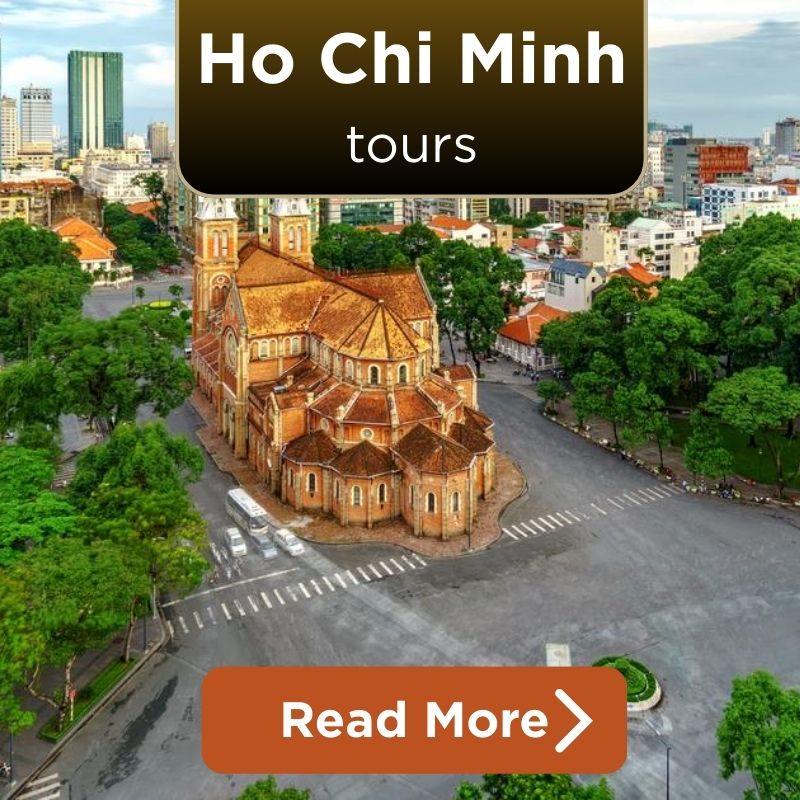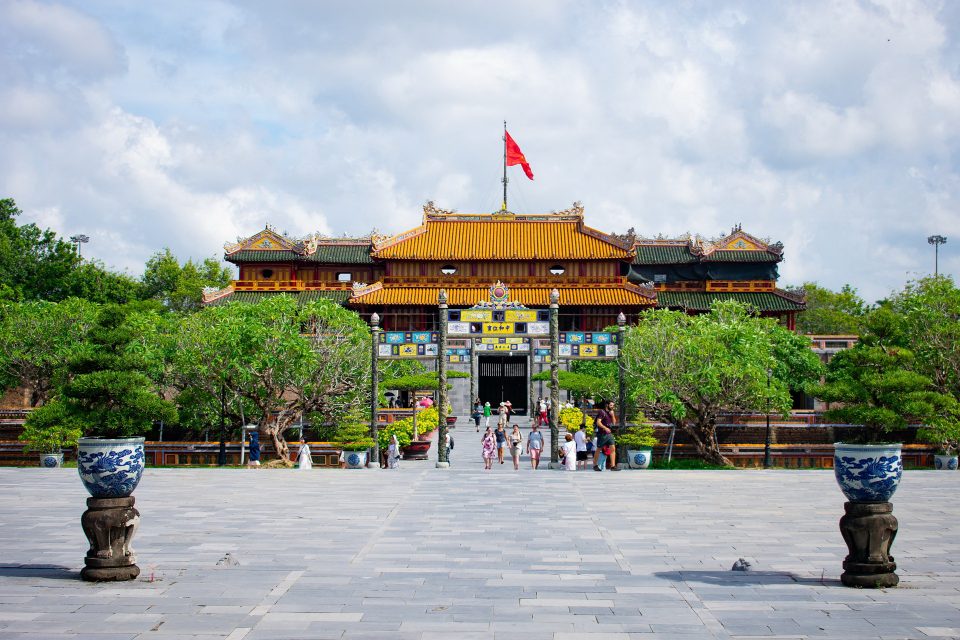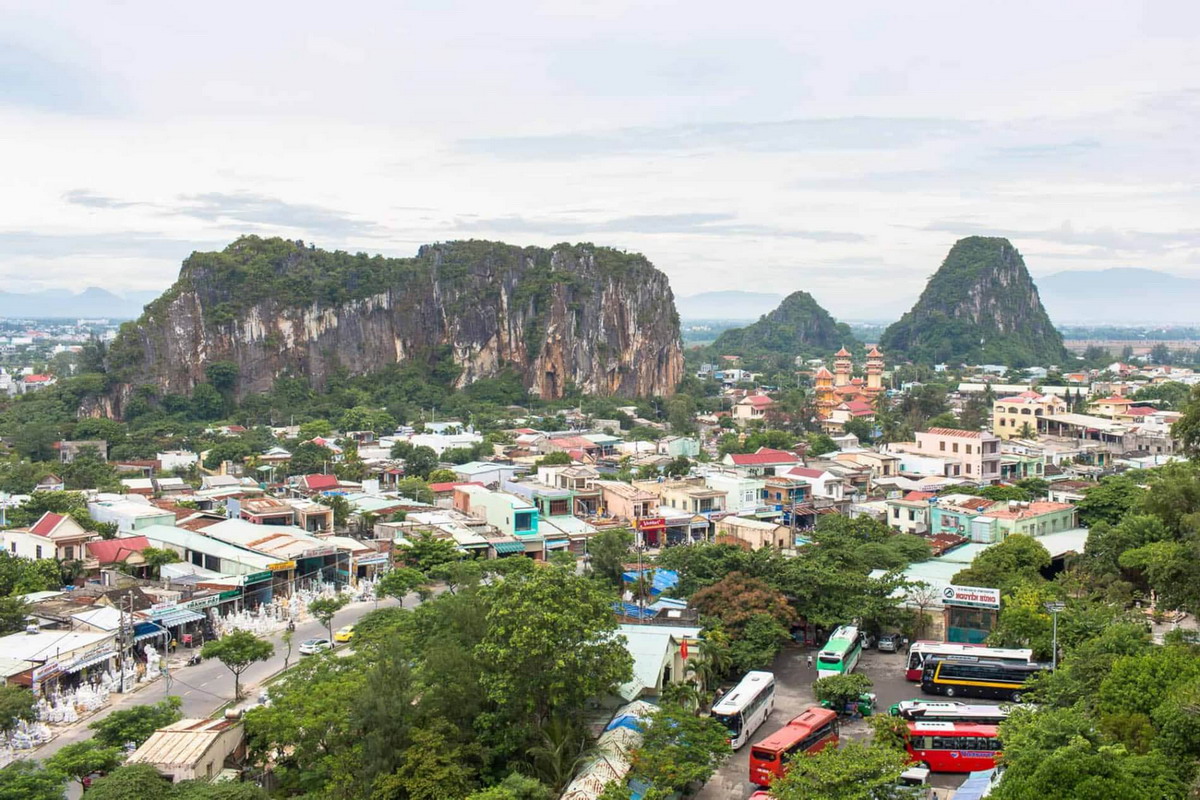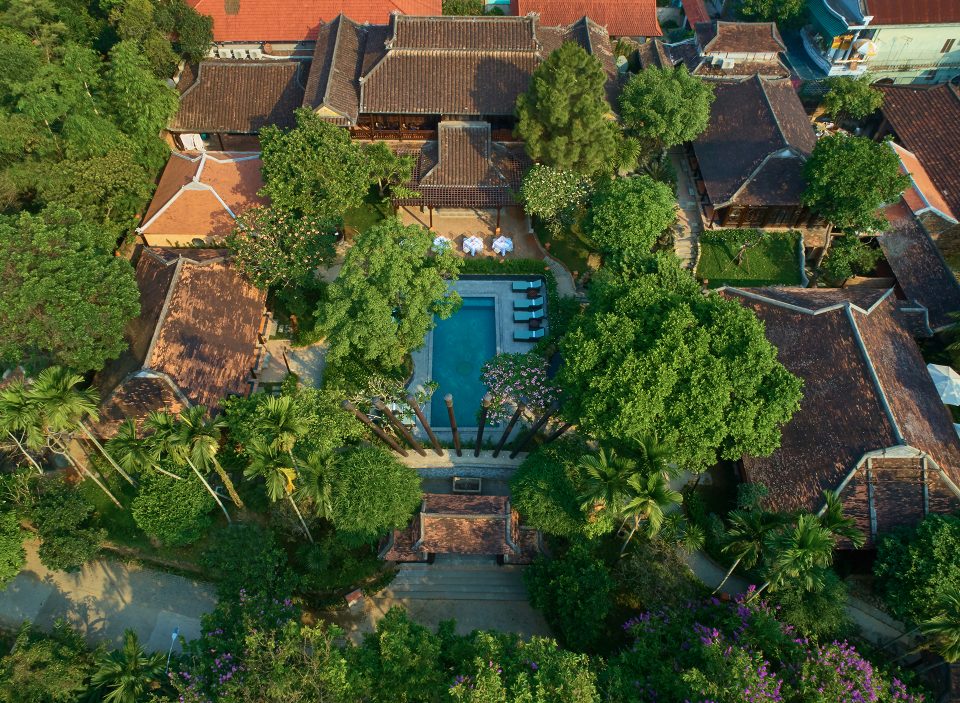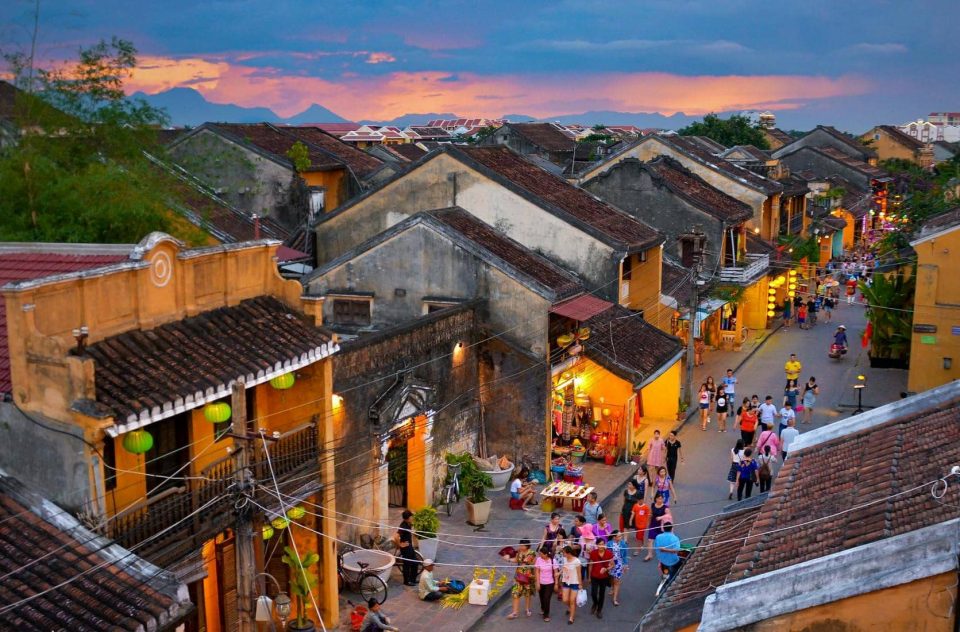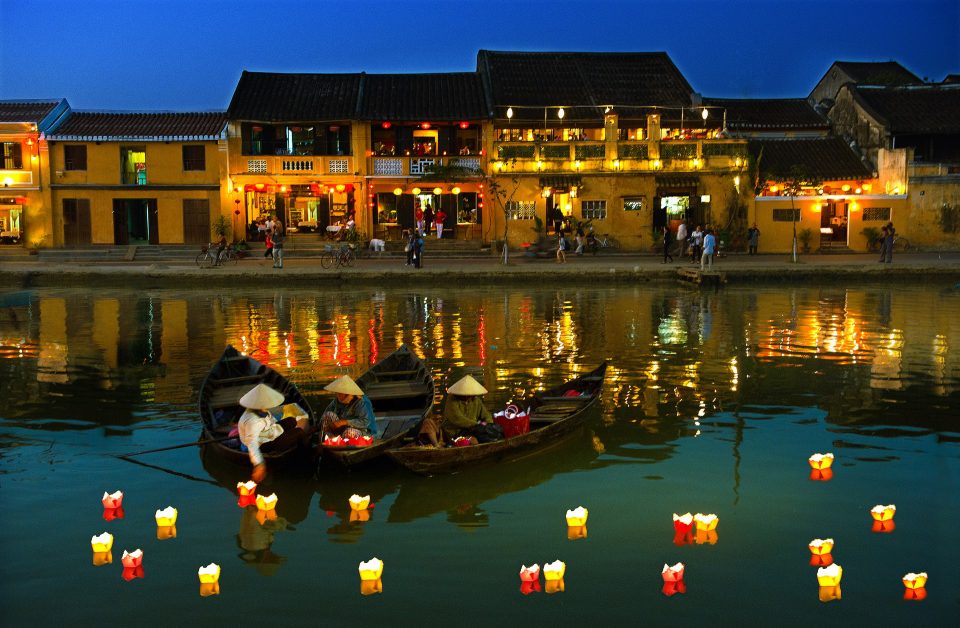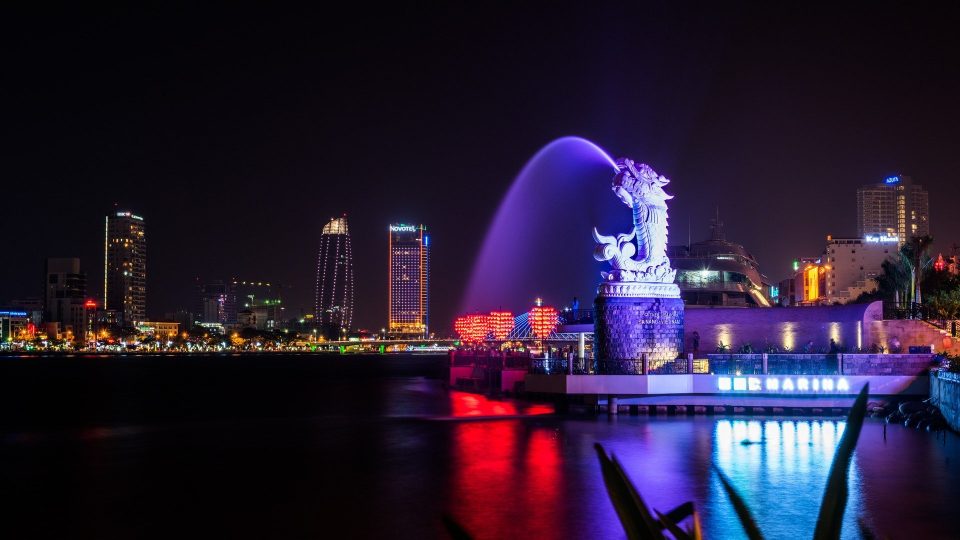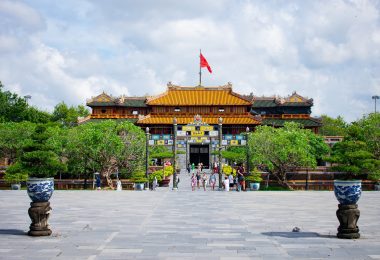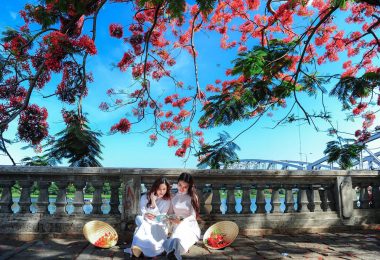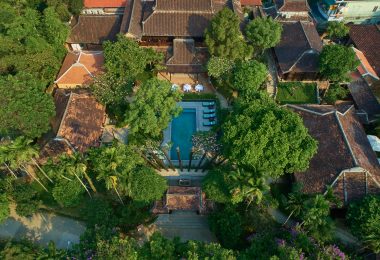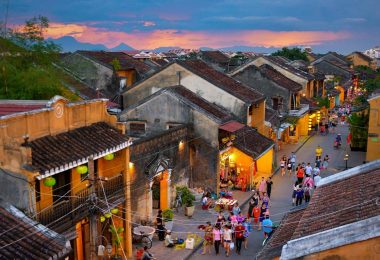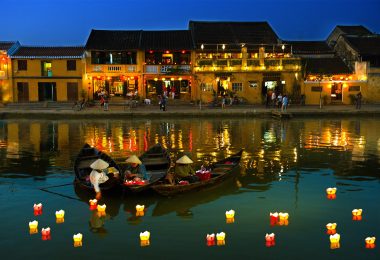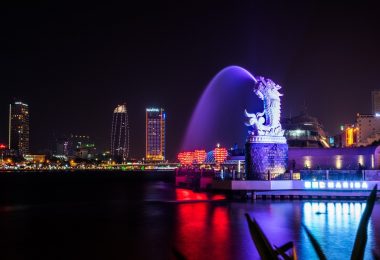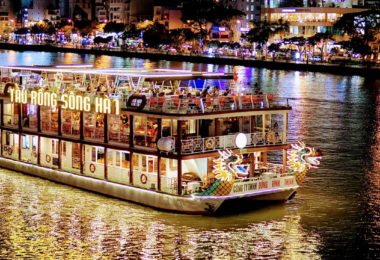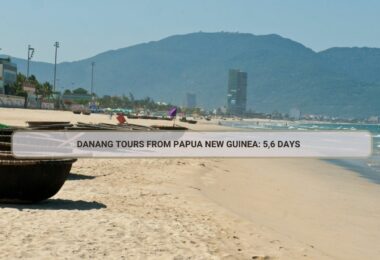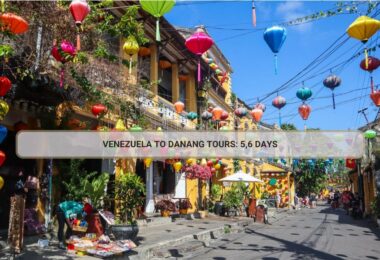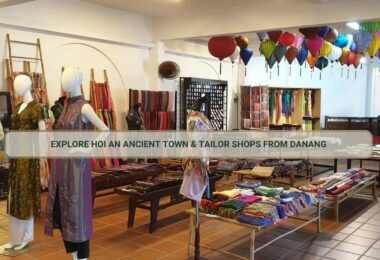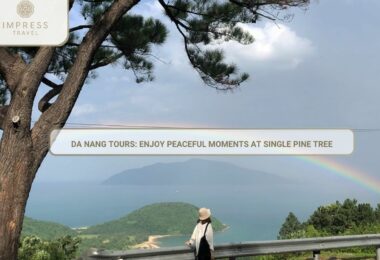Hoi An Ancient Town A short 30km south of Danang in Quang Nam Province, Hoi An was one of the main trading centers from as far back as the 15th to the 19th century. Due to this exceptional mix of cultures & architecture, the town has been recognized as a UNESCO World Heritage site and we say that well deserved. Then if you have been on one of those Amazing Danang tours. We will show you through your travel, and provide tips to take full advantage of what is best for every part. But first, let us explore the charm of Discover Hoi An Ancient Town!
Historical Background of Hoi An
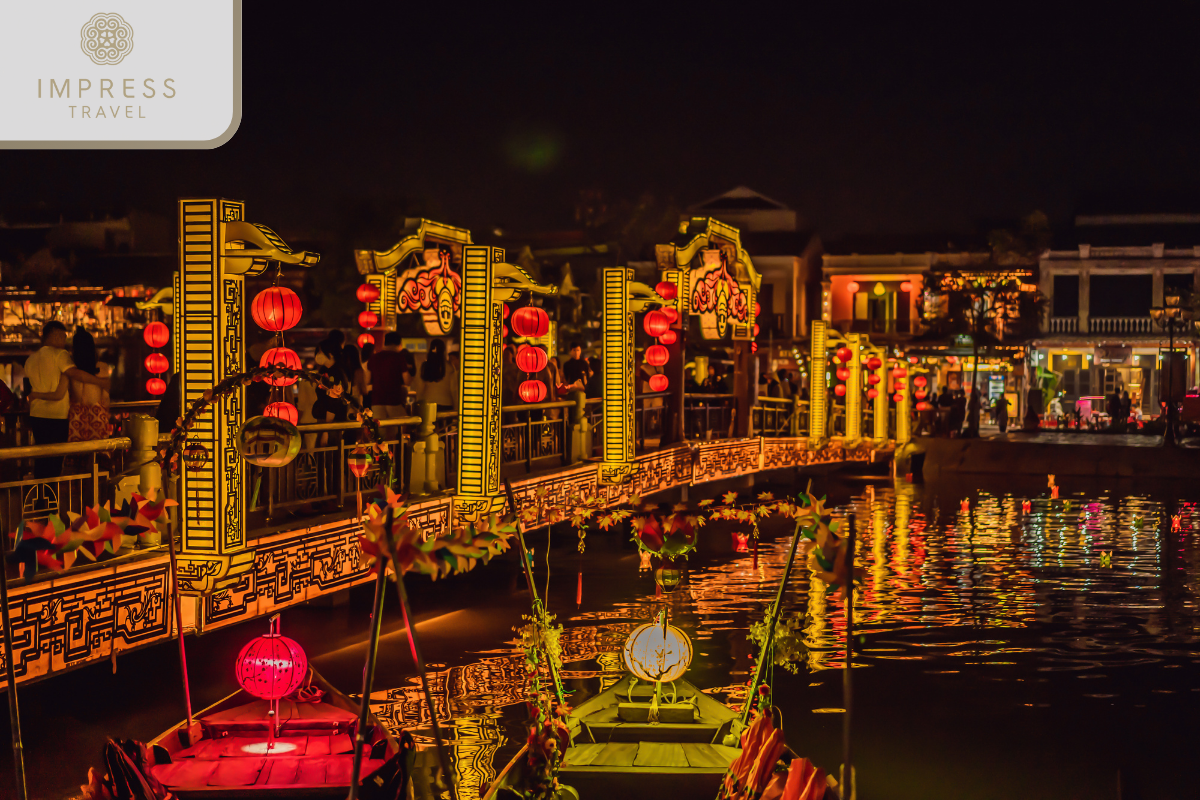
Hoi An Ancient Town
Early History
With over 2000 years of history, Hoi An came into the Golden Era when in its trade route flourished from that period. A charming port town that grew into a trading hub thanks to its ideal position and great trade winds. It became a city of immense trade and exchange; merchants from China, Japan to Europe were regular visitors.
Hoi An was one of the key trading ports in Southeast Asia during its prime days hence established between the 16th and 17th centuries. Some ships would dock here from as far away as Europe, and over the centuries they brought trade goods of immense value circulating among not only people but cultural influences shaping a town unique to any in these parts. The trade allowed the town to flourish and, since then so many different cultures have flocked there that you can see it in their architecture and traditions today.
Cultural Influences
Discovering HOI AN Ancient Town: One of the most interesting things when visiting Hoi An is to see how diverse the visitors are. They brought their beautiful assembly halls and pagodas that you can visit today. It was the Japanese who contributed that, including Hoi An’s iconic symbol: The Japanese Covered Bridge. The European traders added some grand colonial structures to the mix. The meeting of these styles resulted in Hoi An being an architectural gem.
Hoi An was recognized as a UNESCO World Heritage site in 1999. It was inscribed as a unique cultural heritage site for being an exceptionally well-preserved example of a Southeast Asian trading port, incorporating indigenous and European architectural styles and town planning.
Architectural Marvels of Hoi An
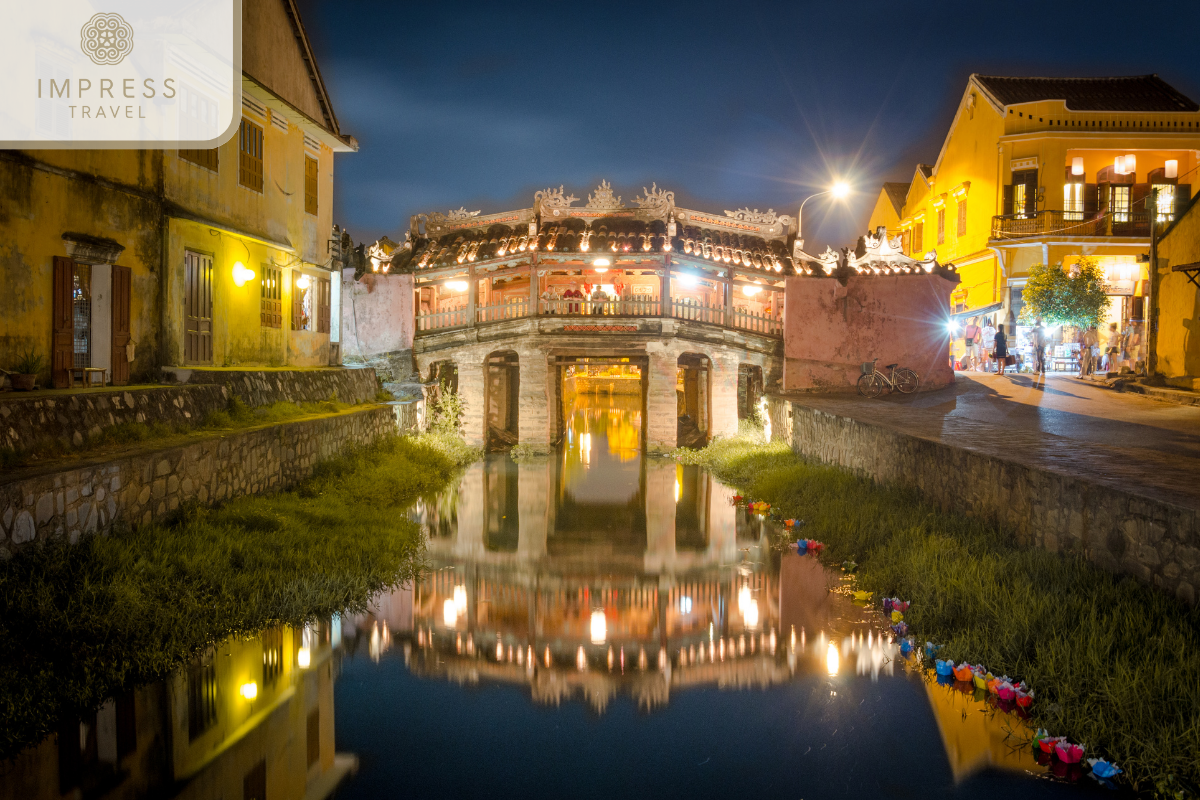
Japanese Covered Bridge
Hello again, intrepid explorers! As we continue our journey to Discover Hoi An Ancient Town, we’re about to dive into its architectural wonders. This town is a treasure trove of unique structures that tell the story of its rich cultural tapestry. Let’s explore the stunning traditional houses, communal halls, and religious structures that make Hoi An a true architectural marvel!
Traditional Houses
Beautiful traditional houses that line the streets in Discover Hoi An Ancient Town Each of these homes is a structural masterpiece with just the right exposure to Vietnamese, Chinese and Japanese essence.
- Features and Design: Wooden beams, intricate carvings, and tiled roofs These are designed with harmony and balance in mind, usually incorporating courtyards and gardens for peace from the crowds of streets.
- Notable Examples: Tan Ky House, Phung Hung Ancient House The over 200-year-old Tan Ky House is in excellent condition and depicts the life of a prosperous merchant family. In contrast to this, Phung Hung House has tall wooden gabled ceilings and a charming upper gallery; hence it displays traditional architecture that is derived from influences from both Chinese and Vietnamese culture.
Communal Houses and Assembly Halls
The streets and houses of the ancient town are impressions that have been recorded in a hundred years photo-book by visitors, however, to place oneself amongst these recordings is still different from visiting them as we meet Hoi An Ancient Town. Their function was not only for meetings but also as social and religious centers for the different ethnic groups.
- Purpose and Significance: Constructed by Chinese or Japanese businessmen, the assembly halls operated as venues for cultural activities like childbirth anniversary parties and commercial gatherings. They were also gateways where newcomers could meet their kind.
- Key Sites: Make sure to see the Fujian Assembly Hall and its beautiful main entrance with dragon decorations. Wild Drawing in Alleys Another sight to see is the small wild drawings found throughout various areas of alleyways, The Assembly Hall has one really pretty garden and a large pond. Between these halls are living monuments of the Hoi An multicultural heritage.
Religious Structures
The religious buildings of Hoi An are truly spectacular. While we are exploring how An Ancient Town -unusual Buddhist pagodas and temples, plenty of them from various religions with different local traditions- in the meantime you can admire traditional architectural pagodas.
- Pagodas and Temples: Quan Cong Temple is dedicated to an important Chinese general with colorful statues, and woodwork The ancient pagoda of Chuc Thanh with the appearance of peacefulness and tranquility, under thousand-year-old bonsai trees will bring an awe-inspiring impression to anyone.
- Chùa Cầu (Japanese Covered Bridge): Possibly the most well-known building in Hoi An, this 400-year-old bridge is considered to be the symbol of the town. Constructed by a group of Japanese merchants, Chùa Cầu is an elegant masterpiece comprising both the Vietnamese and Japanese architectural styles. The bridge itself makes for a great photo spot and reflection point with the archway, wood features, and ornamentation.
This concludes our passage on the architectural gems of Discover Hoi An Ancient Town. Every single building here has an important story of globalization and history to tell, making Hoi An more than magical.
Cultural Heritage and Traditions
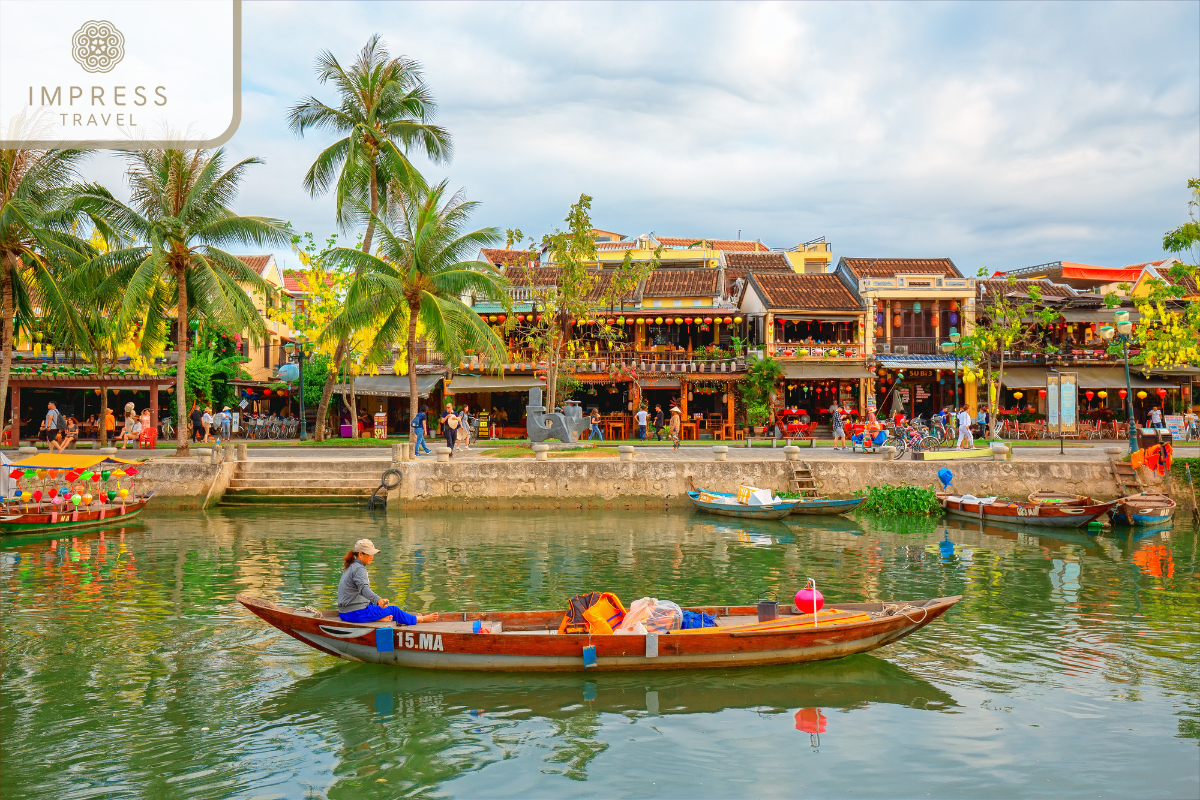
Visit Hoi An
Local Festivals
On your Trip to Hoi An Ancient Town, you will see there is a celebration occurring in this town of light. The festivals here are a fiesta and richly traditional.
- Lantern Festival Picture yourself strolling down the illuminated streets of a town, where thousands of colorful lanterns create a magical ambiance. Lantern Festival, the 14th day of every lunar month. While this festival takes place, the old town turns off its electric lights and lanterns are set to float downriver making a spectacularly peaceful sight. It is a paradise for photographers, and it will automatically make all romantics dream when they see this.
- Tet Festival: From the 14th to 17th of January, this is the Vietnamese New Year also known as Tet in Hoi An. Taking place at the end of January – start of February each year, Tet is a time when members gather for family reunions; enjoy delicious food and attend traditional rituals. Flowers line the streets and there you can find dragon dances, traditional music and an array of treats. Time of year: That is the best time to visit Hoi An Ancient Town in its most festive set
Traditional Crafts
Hoi An is a haven for traditional crafts, which have been passed down through generations. These crafts are not just a livelihood for many locals but also a way to preserve cultural heritage.
- Lantern Making: When you think of Hoi An, lanterns immediately come to mind. The art of lantern-making is a cherished tradition here. You can visit workshops where artisans skillfully create these beautiful lanterns using bamboo and colorful silk. Some workshops even offer you a chance to make your lantern – a perfect souvenir!
- Pottery and Ceramics: Just a short bike ride from the town center, the Thanh Ha Pottery Village is where you can see artisans shaping clay into beautiful pottery. This village has been producing ceramics for over 500 years. Visitors can try their hand at making pottery or simply admire the exquisite craftsmanship on display.
Culinary Delights
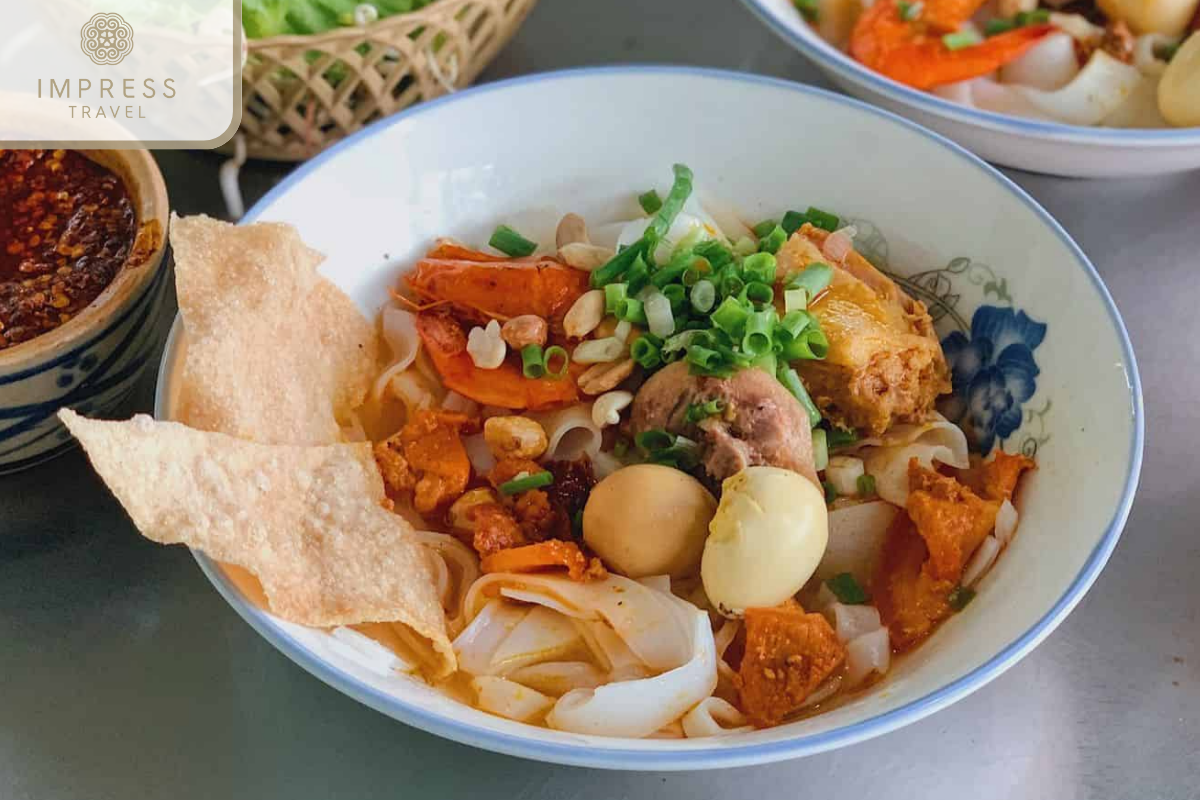
Mi Quang
Your journey to Discover Hoi An Ancient Town can not be fulfilled if you do not taste its culinary arts. The food is a fusion, of many cultures and the cuisine in town has all tastes from cutlets to shawarma showcasing versatility.
Cao Lau
You must try Cao Lau when you Discover Hoi An Ancient Town. This iconic dish is comprised of yellow noodles, succulent strips of pork, herbs and minimal broth. The crispy fried shallots are a wonderful add-on that we enjoy eating along with the noodles and fresh herbs, A bowl of Cao Lau usually ranges from 25,000 VND – to 30,000 VND per sittings.
- Cao Lau Hoi An Trung Bac: 87 Tran Phu, Hoi An, Quang Nam. Price: 30,000 – 50,000 VND.
- Cao Lau Thanh: 26 Thai Phien, Minh An, Hoi An, Quang Nam. Price: 30,000 – 50,000 VND.
- Cao Lau Ba Be: 19 Tran Phu, Cam Chau, Hoi An, Quang Nam. Price: 20,000 – 44,000 VND.
Mi Quang
The exact combination of meats is up to the individual, but it generally contains pork and shrimp as well as some varieties with chicken in addition. It comes served on yellow rice noodles inside a rich broth that has been made by slow simmering hen bones for hours or even days at a time to extract all possible flavors from them. With a light broth, it mimics more of a salad. Served over crushed peanuts, sesame rice crackers and a side of fresh herbs. Each bowl of rice balls costs the price from 25k-40k VND.
- Mi Quang Di Hat: 4 Phan Chau Trinh, Hoi An. Price: 15,000 – 25,000 VND.
- Mi Quang Ong Hai: 6A Truong Minh Luong, Hoi An. Price: 15,000 – 40,000 VND.
- Mi Quang Ba Minh: Cam Ha, Hoi An. Price: 25,000 – 50,000 VND.
Banh Canh
Banh Canh is a thicker rice or (more often) tapioca flour noodle laden dish that has won the hearts of many locals. Organ Meats Wonton Soup topped with pork hocks or crab, fish cakes Cost: 30-60K VND
- Banh Canh Ba Quyt: 51 Thanh Hoa, Tan An, Hoi An. Price: 30,000 – 60,000 VND.
- Banh Canh Co Luon: 276 Ly Thuong Kiet, Minh An, Hoi An. Price: 15,000 – 35,000 VND.
Hoanh Thanh
Wontons (Hoanh Thanh) is a popular food with Chinese characters that has been domesticated in Vietnam. It can be packed with shrimp, pork as well as mushrooms and so on. Comes steamed or fried, and the wontons pack a great punch. Cost : 30,000 – 80,000 VND.
- Hoanh Thanh Anh Ba: Hem 109 Tran Hung Dao, Hoi An. Price: 30,000 – 60,000 VND.
- Hoanh Thanh Nguyen Loi: 78 Tran Hung Dao, Hoi An. Price: 30,000 – 70,000 VND.
- Hoanh Thanh Hoang Ky: 67 Tran Phu, Hoi An. Price: 35,000 – 80,000 VND.
Banh Uot Cuon Thit Nuong
Banh Uot Cuon Thit Nuong is fresh rice paper rolls with grilled pork Pork marinated with herbs and spices, then grilled to a crisp. They’re served with a dipping sauce that packs some tangy, spicy bite. The price is between 6,000 and 30,000 VND per skewer.
- Banh Uot Cuon Thit Nuong Ba Huong: 31 Tieu La, Minh An, Hoi An. Price: 6,000 – 30,000 VND.
- Banh Uot Thit Nuong Co Hoi: 3 Nguyen Hue, Hoi An. Price: 7,000 – 9,000 VND per skewer.
- Gieng Ba Le: 45/51 Tran Hung Dao, Minh An, Hoi An. Price: 15,000 – 45,000 VND.
Banh Vac (White Rose Dumplings)
Banh Vac or White Rose Dumplings are Vietnamese delicate and fragrant, rose-shaped dumplings made of translucent white dough buns with prawn fillings in the center opposing to Chaozhou-style har kou which uses pork instead. The artistry of Hoi An Cuisine never ceases to amaze me with such beautiful & delicious dumplings! Price for one plate: ~ 50000 VND
- White Rose Restaurant: 533 Hai Ba Trung, Hoi An. Price: 50,000 VND per plate.
Banh Beo
Banh Beo – savory steamed rice cakes topped with minced shrimp, pork cracklings and green onions This tiny little dish is served in small bowls and it makes for a delightful snack or even appetizer. Each bowl costs roughly 5,000 VND.
- Banh Beo Ba Bay: 2 Nguyen Thai Hoc, Hoi An. Price: 5,000 VND per bowl.
- Banh Beo 17: 17 Dinh Tien Hoang, Hoi An. Price: 5,000 VND per bowl.
Travel Tips and Recommendations
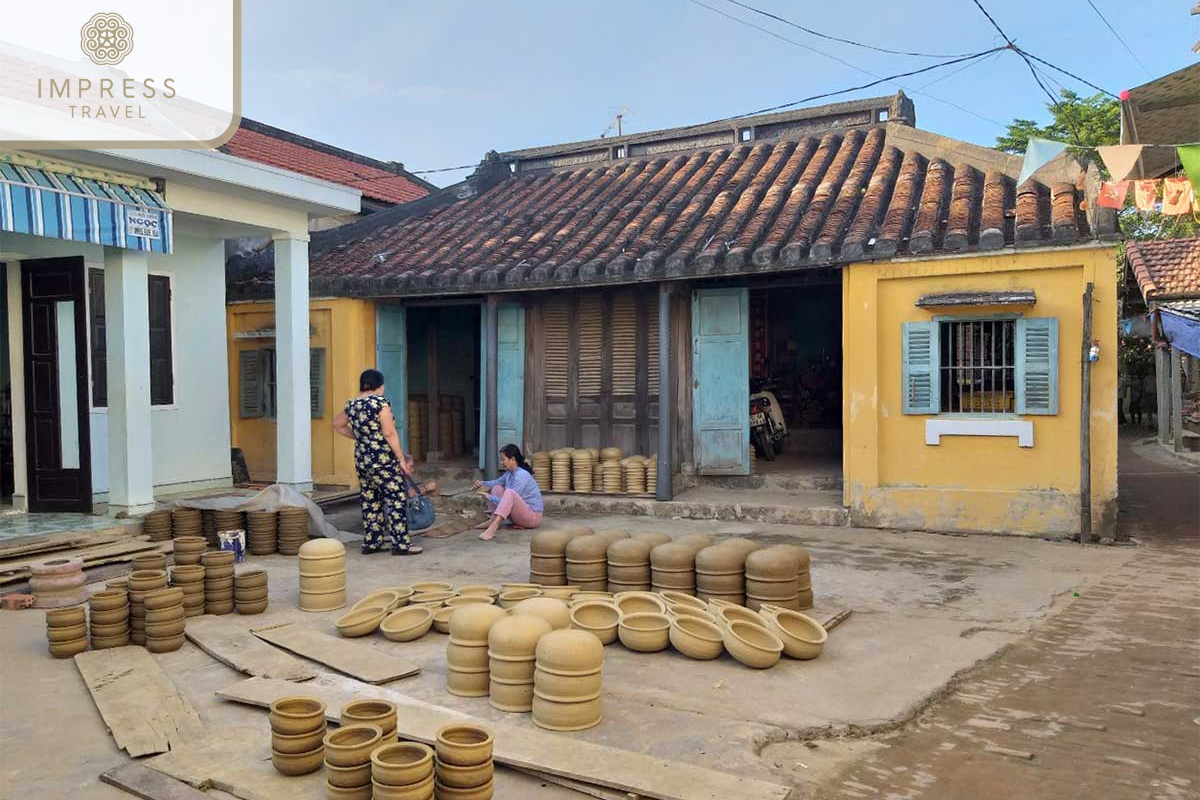
Pottery making experience
Best Time to Visit
Hoi An is beautiful any time of the year, although there are certainly better times than others.
- Seasonal Highlights: The most wonderful time to visit Hoi An Ancient Town is from February through April, with cool weather and dazzling flowers. This is also when you’ll see the colorful Tet Festival light up this Beau town, tempting locals and visitors out into traditional music, dance and taste sensations they just can’t refuse.
- Weather Considerations: Hoi An has a tropical climate so it can get hot and sticky, especially May-July. There can, however, be quite a bit of rain from September to January during the rainy season when alternating floodwaters down historical streets often add mystic charm with their lantern-lit nights
Transportation Options
With these tips, reaching and moving around Hoi An is easy!
- Getting to Hoi An:
- Flights: The closest airport is Da Nang International Airport, which lies about 30km from Hoi An. You can then grab a taxi, or shuttle bus or arrange a private transfer with one of the Amazing Danang tours from here. The journey costs approximately 300,000 -400,00 VND (13-17 USD) by taxi that lasts about an hour.
- Trains: The Da Nang Railway Station has some great train lines if you love the view! Travel by train allows for picturesque views of the coastline and it takes only a short bus ride from the station to Hoi An. Hard seat trains: around 400,000 VND (17 USD)
- Buses: Buses or coaches from well-known bus companies also directly operate from main cities of Vietnam like Hanoi, Saigon (Ho Chi Minh City), and Hue to Hoi An. For budget travelers, this one is a cheap and easy address. The entrance tickets cost 250,000 -500.000 VND (11-22 $)
- Getting Around:
- Bicycles: This makes for an easy and scenic way to spend a couple of hours on two wheels. Most places will offer bikes for free or at a very cheap cost; on average about 40,000 – 50,000 VND (2 USD) per day
- Motorbikes: For the more adventurous travelers, Hiring a motorbike is not just an exciting way to see Hoi An but also to visit nearby countryside areas and beaches Costs for rent will be around 100,000 -150,000 VND (about $4-6) a day.
- Walking Tours: One of the best ways to appreciate Hoi An is on foot. Take a guided walk with local experts or Danang Tours to discover interesting stories and historical insights. Walking tour prices: FROM 200,000 VND (9 USD) per person
Accommodation Guide
Whether you’re looking for luxury or traveling on a budget, Hoi An has a range of accommodation options to suit every need.
-
- Top Hotels and Guesthouses:
- Anantara Hoi An Resort: Located at 1 Pham Hong Thai Street, a historical waterfront retreat where every effort has been made to preserve the town’s architectural style. Room rates from 3,500,000 VND(150 USD) per night. Great for those in need of some luxury
- Hotel Royal Hoi An – MGallery: Located at 39 Dao Duy Tu Street, where authentic grandeur meets modern luxury with beautiful scenery and top-notch service. All you need to do is open your wallet from 3,0000,000 VND (130 USD) / night.
-
- Hoi An Backpackers Hostel: Located at 250 Cua Dai Street, If you have energy to spare, this hostel offers a lively atmosphere with comfortable dorms and cheap tours of Hoi Ancient Town. Hostel dorm beds are from 6.5 USD (150,000 VND) per night
- Vinh Hung Heritage Hotel: Located at 143 Tran Phu Street is a great budget option with historical charm in one of the old town’s original houses. Lead Image: Rates from 800.000 VND/night
Let’s cover some essential practical details to ensure your trip is seamless and enjoyable.
Entry Fees and Tickets
Most of the established sites and museums in Historical Hoi An Old Towns allow an entrance ticket to spending your time to Discover. Here’s what you need to know:
- Historic Sites and Museums: Five attractions of ancient houses, assembly halls or museums can be visited with a single entrance ticket at the price of 120,000 VND (5 USD) for each person.
- Combo Tickets: You can save yourself time and hassle by getting a combo ticket that gives you access to several of the sites as well as one traditional performance. Available from tourist information centers around town for 150,000 VND(6.5 USD).
Local Etiquette and Safety Tips
Be respectful, and watch out for your safety, and you will have an amazing time.
- Cultural Norms and Behaviors: When going to temples & pagodas or visiting someone’s house. The common courtesy of removing your shoes before entering someone’s house or a sacred place. Ask permission to photograph locals
- Health and Safety Precautions: Make sure you are drinking enough water in the hotter months of the year. Prevent bites by wearing mosquito repellent. But overall, Hoi An is pretty safe – just keep an eye on your bags and don’t stroll around after dark alone.
Useful Contacts and Resources
Keep these contacts handy to make your trip even smoother.
- Tourist Information Centers: These centers are scattered throughout Hoi An and offer maps, brochures, and helpful advice. The main center is located at 10 Tran Hung Dao Street.
- Emergency Contacts:
- Police: 113
- Ambulance: 115
- Fire Brigade: 114
Conclusion
Once there, you can see for yourself how Hoi An is a real jewel with its unique history, vibrant culture and contrasting architecture. This from its age-old homes, hamlets and temples to its sumptuous food savoring festivals of Hoi An make it the most wondrous place ever!
So, what are you waiting for? What are you waiting for?! Book those tickets today to Discover Hoi An Ancient Town! If you want an experience that will make your heart warm, go to Hoi An and meet lovely people; wander around small streets with delicious foods. Do not forget for better and more comfortable travel, book your Danang Tours with Imprèss Travel. See you in Hoi An! Don’t forget to regularly follow our Fanpage for more interesting information about traveling Danang to and to book Danang Tours at the best prices.
References and Further Reading
- “Hoi An: Ancient Town on the Thu Bon River" by Vu Hong Lien
- “The Silk Roads: A New History of the World" by Peter Frankopan
- “Vietnam: A Traveler’s Literary Companion" edited by John Balaban and Nguyen Qui Duc

















